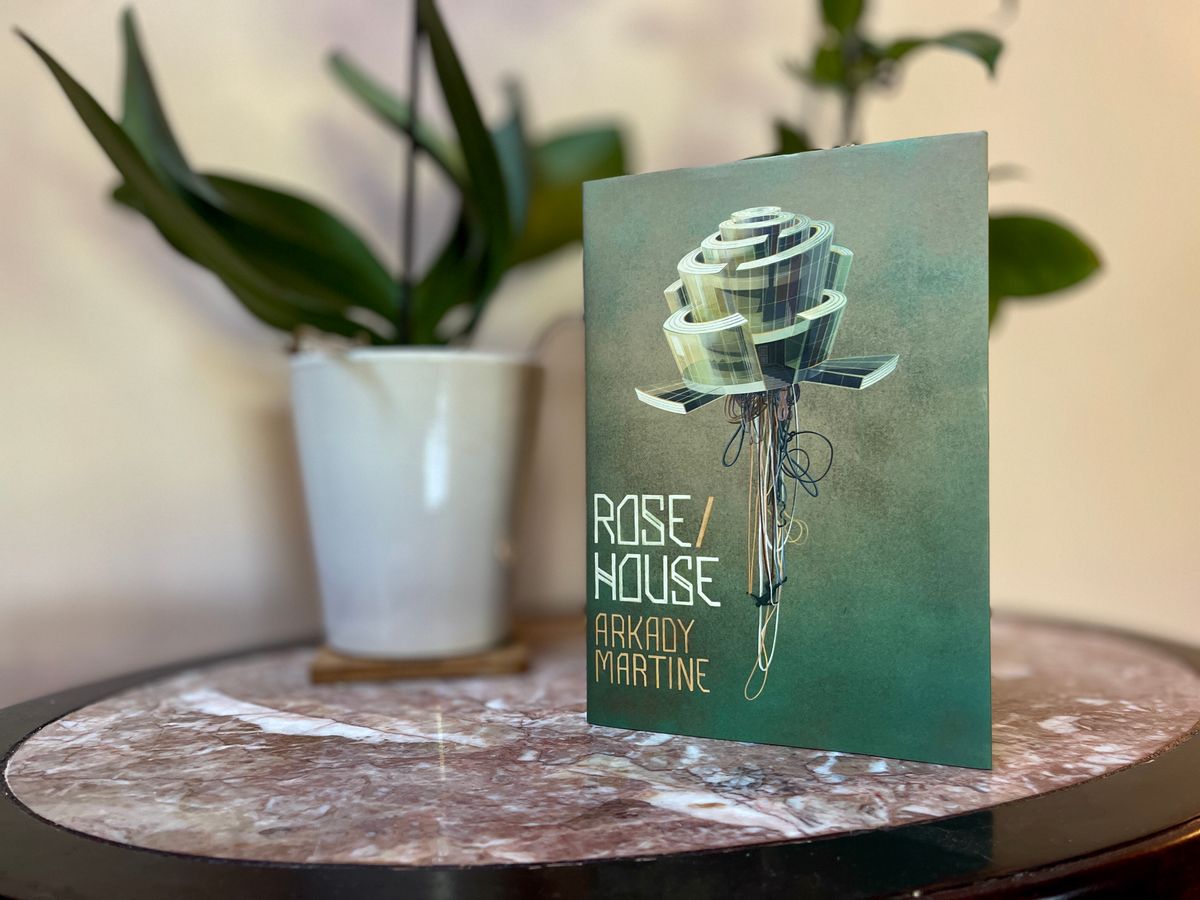Studies in claustrophobia
Arkady Martine’s Rose/House is an intriguing locked room mystery that explores the uncanny nature of AI

It feels as though there's been a shift recently in how writers and creators are imagining artificial intelligence: gone are the types of stories where it's just an artificial person or a cold and calculating, sociopathic version of a person, and in is the weirdness of artificial intelligence: look at books like Linda Nagata's The Red, P.W. Singer & August Cole's Burn-In, or Ray Nayler's The Mountain in the Sea, all of which take some measure of reality for how AI is really playing out in the real world; systems that perform functions but for which we really understand little.
Arkady Martine's latest is a slim novella from Subterranean Press, Rose/House, in which a famed and eccentric architect, Basit Deniau, has made a masterpiece of a building (the titular building) and where he's entombed as an artificial diamond. Rose/House is also artificially intelligent, and per the man's will, it only allows one person in, once a year: a former, disgruntled student, Dr. Selene Gisil. She's often reluctant to return and revisit the building and its archive, but continues, year after year, to make the pilgrimage.
Subterranean sells the book as a neat, locked room mystery: after one of Gisil's visits, Rose/House calls the local police precinct to inform them that there's a body inside, and Gisil returns from her home overseas to assist the beleaguered detective and figure out how someone got into the house and how (and when) they were murdered in it.
But Martine turns this story on its head: the locked-room mystery is interesting, but as the characters tease out the possibilities for how the crime occurred, she uses the book to explore some of that weird AI that we've been seeing more and more of.
This is something that I've been particularly fascinated by: a couple of years ago, I went to a US Army base in Pennsylvania, Carlisle Barracks, where I took part in a war game designing exercise about preparing for an adversary utilizing an artificial intelligence for their command and control. One of the takeaways that our hosts impressed upon us was that this wasn't Terminator, but that the ways that companies were using AI, like Amazon, were finding that it was doing things in strange ways that on their face, didn't look or sound logical, but which ultimately did work, even if we didn't fully understand it. That's the type of logic that we were trying to tease out.

Martine does something similar here: Rose/House adheres to some rigid programming when it comes to allowing entry – ostensibly protecting the legacy of its creator, and we're treated to some unsettling interactions as Gisil and detective Maritza Smith work on gaining entry and investigation. She deftly describes this futuristic world populated with self-driving cars and climate restrictions, while seemingly leaning into the normality of this far (at least a century) future that feels all too plausible in 2023.
In doing so, she turns this book from a straightforward locked-room mystery and into a character study for a grim future in which we've got some bright and beautiful points. The structure itself is described as an architectural marvel, while its brains, Rose/House, is a marvel in and of itself (its unique nature is a key part of the crime that drives the plot). Martine builds an unsettling, claustrophobic atmosphere within Rose/House, a product of the uncanny, inhuman nature of the intelligence that inhabits it. She nails that inhuman feeling that the character of the building brings: programming code running on strictly-defined instructions.
The closest that I've felt to experiencing this sort of cold, calculating threat was when our rooster, Noodles, attacked my foot the other day: the encounter sent a shiver down my spine: this little creature transformed (literally – his feathers puffed out, transforming his entire shape) into a malevolent protector of his girls when he perceived a threat that I wasn't aware was a threat (my shoe, apparently), and his entire focus was on eliminating it. If I ever wanted to know what it was like being hunted by a dinosaur, that was it.
I got the same sort of chill thinking about Rose/House's cold, calculating intelligence. That inhuman malevolence plays right into the tense atmosphere in the house, and Martine lays it out beautifully. She does bring the mystery to a conclusion, and it's one that's as strange as the building in which the crime took place. The resulting book feels like it's a mirrored portrait of the world that surrounds us now: unsettling and bleak, with moments of calm and beauty that penetrate the walls around us.